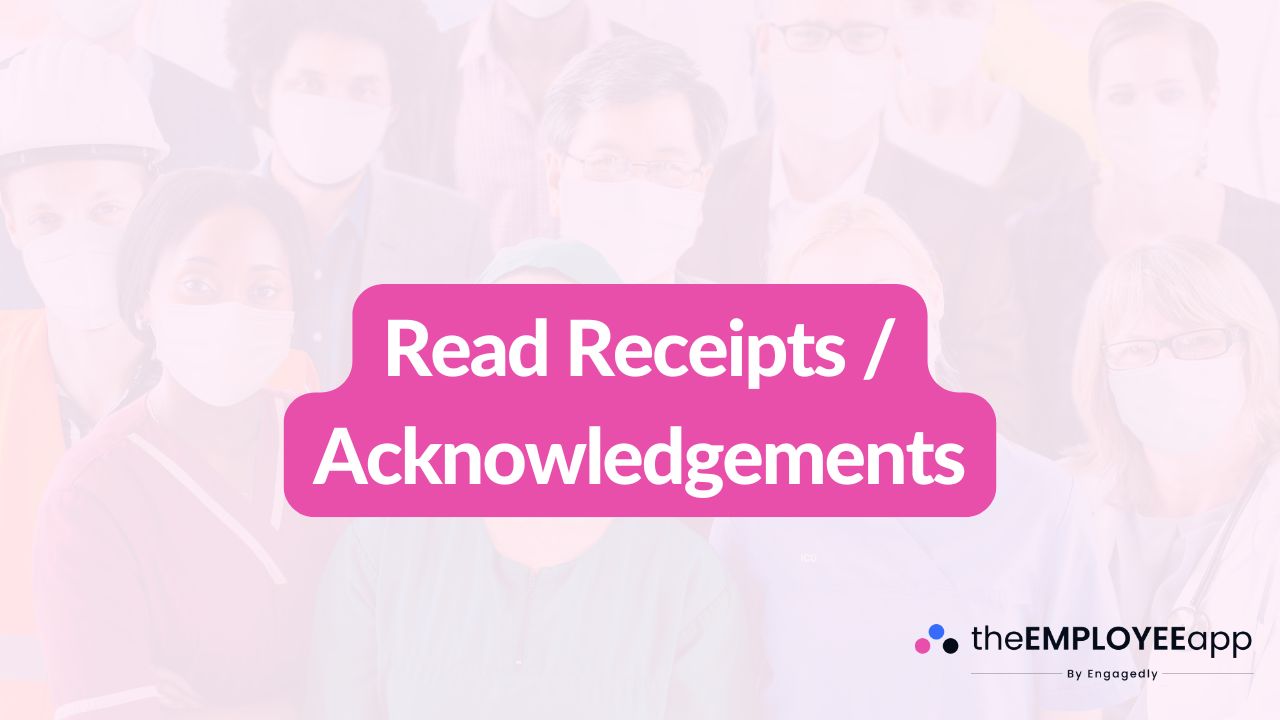
Read receipts and acknowledgements are communication features that confirm whether a message has been received and reviewed by the intended recipient. In workplace communication, these tools help organizations ensure that critical information is not only delivered but also seen and understood by employees.
A read receipt provides confirmation that a message has been opened. An acknowledgement, on the other hand, goes one step further by requiring the employee to actively confirm they have read and understood the information. Together, they provide organizations with visibility into communication effectiveness and employee accountability.
In today’s fast-paced, multi-channel communication environment, it can be difficult to know if employees are truly receiving and engaging with important messages. Emails may go unread, and memos can be missed. For industries where compliance, safety, or urgent communication is critical, this uncertainty poses significant risks.
Read receipts and acknowledgements solve this problem by:
Confirming message visibility
Holding employees accountable for critical updates
Reducing communication gaps in dispersed or frontline workforces
Enhancing compliance and safety protocols
These tools give leaders the confidence that their workforce is informed, aligned, and responsive.
Implementing these communication features offers several important benefits for organizations:
Accountability – Employees cannot claim they did not receive or review key communications.
Compliance – Acknowledgements create a documented record that employees have read and accepted important policies or training requirements.
Transparency – Leaders gain visibility into message reach and engagement.
Safety – In high-risk environments, confirming that safety alerts are seen can prevent accidents.
Efficiency – Reduces the need for repeated follow-ups, saving time for managers and administrators.
Improved Engagement – Employees become more intentional about checking and responding to messages when they know read tracking is in place.
Organizations across industries rely on read receipts and acknowledgements in different ways:
Compliance Training: Confirming employees have read and completed regulatory or safety training updates.
Policy Changes: Ensuring that workers acknowledge new HR or operational policies.
Safety Alerts: Verifying that critical health and safety instructions are seen by frontline employees.
Crisis Communication: Tracking that emergency updates or procedures reach all staff in real time.
Onboarding: Documenting that new hires review required documents such as codes of conduct or employee handbooks.
These practical applications highlight the value of read receipts and acknowledgements in strengthening both communication and organizational accountability.
While useful, these tools can present challenges if not implemented thoughtfully:
Privacy Concerns: Some employees may feel monitored or pressured by constant tracking.
Message Overload: Overusing acknowledgements for non-essential communication may cause frustration.
False Security: A read receipt only confirms that a message was opened, not necessarily understood.
System Reliability: Organizations must ensure that the technology is accurate and works across all devices.
To be effective, organizations should use read receipts and acknowledgements strategically, balancing accountability with respect for employee experience.
To maximize effectiveness and minimize challenges, organizations should follow these best practices:
Reserve for Critical Communication: Use acknowledgements for safety updates, compliance, or policy changes—not everyday reminders.
Be Transparent: Explain to employees why read receipts are being used and how the data will be applied.
Keep It Simple: Ensure the acknowledgement process is quick and easy to complete.
Pair with Training: Provide employees with context and training to avoid misunderstandings.
Monitor Responsibly: Use tracking to enhance accountability, not to micromanage employees.
Integrate with Digital Platforms: Choose communication tools or employee apps that seamlessly support read receipts and acknowledgements across devices.
Modern employee communication platforms make it easy to automate read receipts and acknowledgements. Many solutions provide dashboards and reporting features, giving leaders insights into which employees have seen messages, when they viewed them, and whether acknowledgements were completed. This data helps organizations refine their communication strategies and ensure important information is not overlooked.
Read receipts and acknowledgements are powerful tools for ensuring critical workplace communication is delivered, seen, and acted upon. By providing visibility, accountability, and compliance support, they help organizations create safer, more engaged, and better-informed workforces. When used strategically and responsibly, these features can transform communication from a one-way broadcast into a reliable and measurable exchange of information.